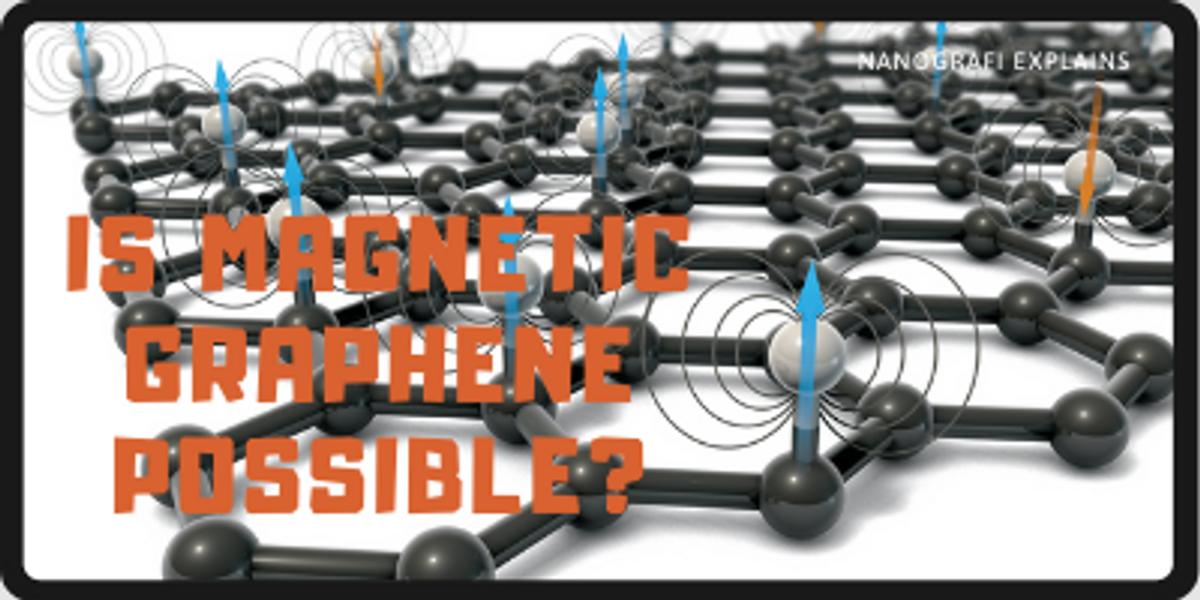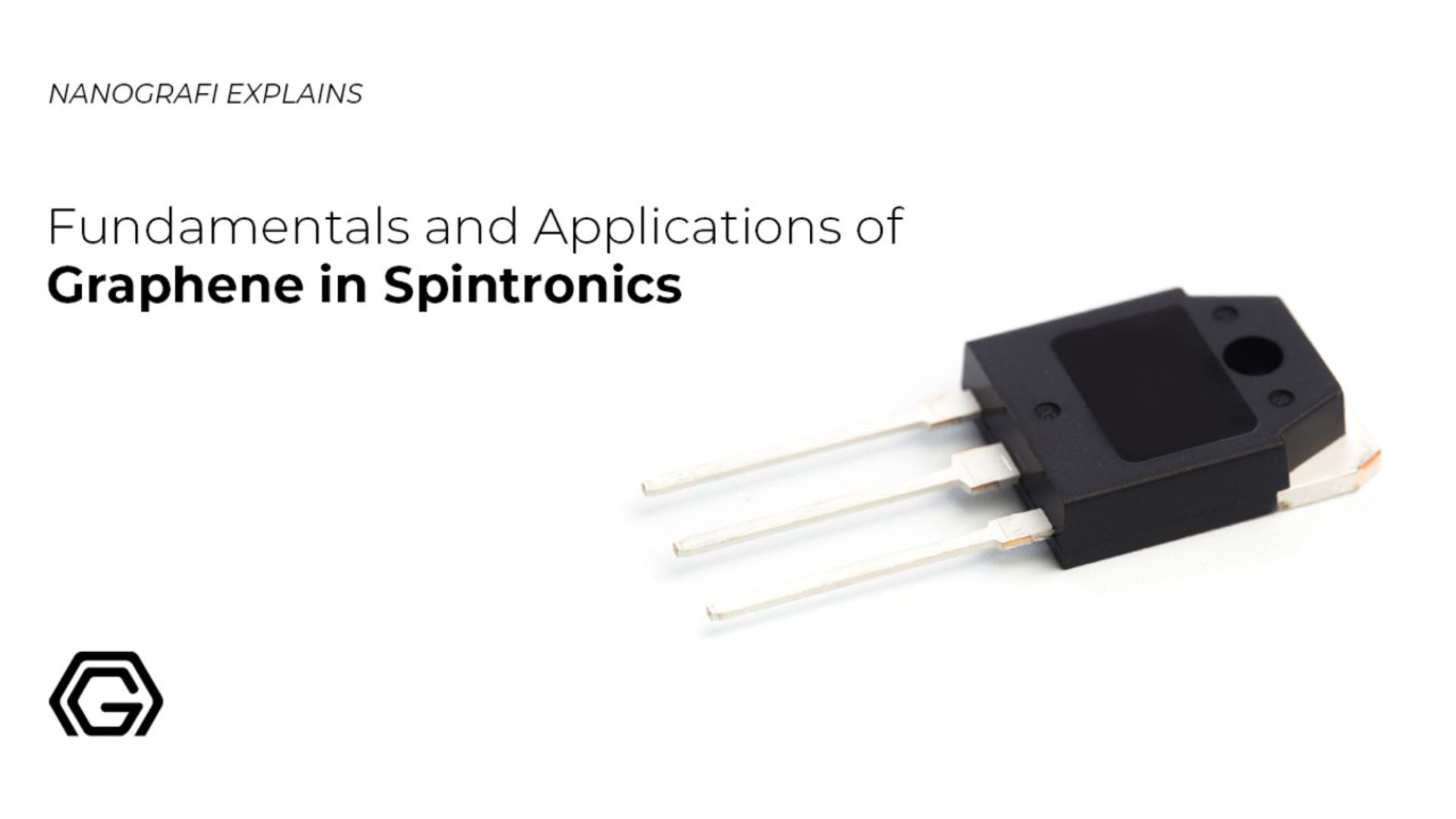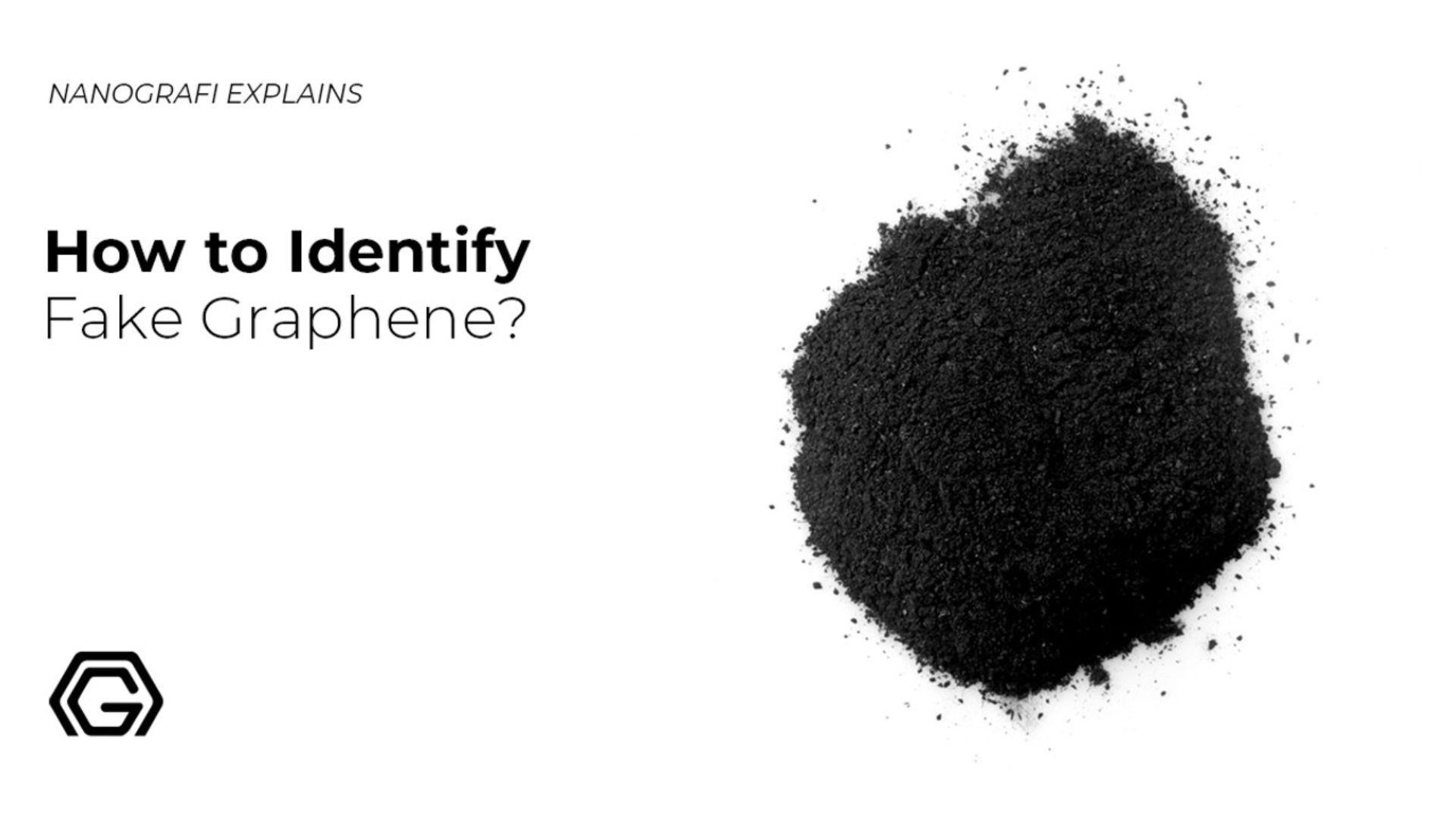Is Magnetic Graphene Possible?
The idea of magnetic graphene has been fantasized over since the discovery of graphene.
But, is it really possible to achieve magnetic properties with graphene? Several routes have been followed to achieve this goal such as topological frustration, structural defects, twisted bilayered graphene structures, proximity induced magnetic properties, and twisted bilayered graphene structures.
Introduction
Even though these methods still require further development, the studies show that it is possible to obtain magnetic graphene. Magnetic materials are amongst the building blocks of modern technology. Today, most of the presently used magnetic materials involve the elements belonging to the d- or the f-block of the periodic table. However, rapid technological developments require enhanced magnetic materials that could be utilized at much smaller scales.
Properties of Graphene As a 2D Material
The incorporation of two dimensional (2D) into new generation technologies has proved to be advantageous since they show enhanced electrical, thermal, and mechanical properties compared to their 3D counterparts. for several different aspects. Hence, intrinsic magnetism of 2 dimensional structures, especially 2D crystals and Van der Waals heterostructures, has also been frequently theorized to develop exotic properties. Such properties include fractionalized excitations, long-range quantum entanglement of their ground state, topologically protected transport channels, or even high-TC superconductivity upon doping as well as quantum-spin liquid phases. In theory, the magnetic properties of 2D materials present a very different phenomenology from their three-dimensional counterpart due to the reduced dimensionality and the increased importance of fluctuations. Unfortunately, very few 2D structures are found to exhibit intrinsic magnetism hence, the studies on developing such structures are still under investigation. Amongst 2D structures, graphene raises a lot of interest with its unique properties. It has been the star player of material sciences and many other applications. The unique atomic layered 2D structure of graphene yields in various attracting properties such as excellent mechanical strength, electrical conductivity, high electron mobility (2.5 × 105 cm2 V−1 s−1), linear band dispersion at the Fermi level, thermal conductivity (~ 5000 Wm−1K−1), optical transmittance (~ 97,7%), chemical stability, and large surface area (2630 m2 g−1). Even though graphene has shown numerous valuable intrinsic properties, the ideal graphene structure is considered as nonmagnetic. However, the idea of combining the excellent properties of graphene with ferromagnetism has been dazzling researchers from the very first days of the discovery of graphene. Even though magnetic graphene has always been a very controversial area of research that suffered from the poor reproducibility of experimental results, recently some promising improvements have been achieved. Several different routes have been established to obtain magnetic graphene structures. The studies for obtaining magnetic graphene structures have started with the inclusion of magnetic particles into the graphene structure and continued with much more sophisticated methods such as proximity induced ferromagnetism; defect induced ferromagnetism radiation damage, dopant materials and adatoms; edge-state spins of nanographene; and twisted bilayered graphene structures.
Twisted Bilayered Graphene
The Discovery of intrinsic magnetism of twisted bilayered graphene was actually a coincidence. The bilayered graphene structures with slight twist angles are known to show superconductivity meaning that electric current passes through the structure with zero resistance. The experiments conducted to build on this superconductivity of bilayered graphene have resulted in a surprising discovery. When an electric current is applied on the twisted bilayered graphene the structure shows a large voltage perpendicular to the current flow which indicates the presence of a magnetic field. Furthermore, the magnetic field is still persistent even when the applied electrical current is removed. This indicates that the generated magnetic field is an intrinsic property of the twisted bilayered graphene structure. What is more, is that the magnetic behavior of the twisted bilayered graphene structure is not ordinary ferromagnetism. Most of the materials show ferromagnetism induced by spin polarization which wouldn’t be accompanied by the Hall effect. However, twisted bilayered graphene structures show orbital ferromagnetism with a giant anomalous Hall (AH) effect as large as 10.4 kΩ. The studies also show that the magnetic field of a twisted bilayered graphene structure can be reversed by applying a small DC current which gives great control on the magnetic properties. Even though the AH resistance is not quantized and dissipation is significant, the orbital ferromagnetism of twisted bilayered graphene still comes in handy. The small magnetic field extending from this 2D material allows the packing of magnetic structures very closely.
Another study conducted on the magnetism of twisted bilayered graphene structures suggests that the magnetic properties are electrically controllable. According to these experiments, the twisted bilayered graphene structures can be either antiferromagnetic (AFM) or ferromagnetic (FM). In the lattice-FM phase, the spiral order arises as a result of the triangular symmetry of bilayered regions that frustrates a globally antiferromagnetic bilayer alignment. This spontaneous magnetization of two different types emerges from the Moiré pattern created by the small twisting angles. The two magnetic orders can be switched electrically by applying a voltage bias between layers. The combination of these two behaviors in the same structure offers electric tunability, magnetic frustration, the interplay of two switchable magnetic phases with zero net magnetization, spatial localization of magnetic moments, and an adjustable period of the magnetic superlattice.
Even though the magnetic behavior of twisted bilayered graphene is still under investigation and needs further characterization, there is no doubt that exploring the magnetic behavior of these structures will open the doors to various different developments.
To get more information about the applications of graphene,
you can read our blog post here.
Edge-State Spins of Nanographene
The carbon atoms in graphene are arranged in a honeycomb structure. Each carbon atom forms alternating single and double bonds which are the exact representation of Kekulé structure. According to Kekulé structure, electron pairs inhabiting the same orbital must differ in their direction of rotation as a consequence of the quantum mechanical Pauli's exclusion principle. This way, there is no unpaired electron left in the organic structure. The Kekulé structure is accepted as the reason for the non-magnetic behavior of the graphene. The magnetic moment caused by the spin of an electron is cancelled out by the magnetic moment of the other electron in the electron pair. However, if an electron is alone in its orbital the magnetic moment remains intact creating a small magnetic field. Hence, defying the Kekulé structure which is also defined as topological frustration might be the answer to the magnetic graphene problem. Non- Kekulé structures can be obtained at the nano sizes. The edge state spins of nanographene give rise to unconventional magnetism in nanographene due to unpaired electrons at the edges of the structure. Nanographene shows edge state in the well defined hydrogen-terminated zigzag edges. The edge-state spins are arranged in parallel to each other in a zigzag edge with strong ferromagnetic interaction, whose strength is in the region of several 103 K. This suggests that nanographene is expected to be a ferromagnetic material with a Curie temperature higher than iron, which is a popular ferromagnet. Along with the zigzag edge, several other nanographene structures have also been suggested to show ferromagnetic behavior. Some of these structures can be listed as; Fujita edge, Klein edge, and bow tie-like structure known as "Clar's goblet". The Clar’s goblet is antiferromagnetic in its natural structure, but it can be brought to a ferromagnetic state when excited with a certain energy called exchange coupling energy. To ensure that the structure remains at the ferromagnetic state this exchange coupling energy must be higher than the energy dissipation when the gate is operated at room temperature. Luckily, the exchange coupling energy in Clar's goblet is relatively high at 23 meV which implies that the structure could be stable at room temperature. The development of magnetic graphene structures may assist the development of spintronics due to their possible stacking and potential for portable applications. The possibility of fixing Nano-objects directly on the graphene surface makes it particularly appealing for device and sensing applications.
Defect Induced Magnetism
On the way to obtaining magnetic graphene, the structural defects are also exploited. Defects in the graphene structure can be created intentionally through irradiation, substitutional doping of B and N atoms, or adatoms. The radiation damage results in vacancies and interstitial defects in the graphene structure. The process involves the direct transfer of kinetic energy from the high-energy incident particles to the individual atoms in the graphene lattice. If the transferred energy is larger than the displacement threshold Td, the recoil atom may leave its equilibrium position leading to the formation of a pair of point defects. The disruption of symmetry in the graphene structure induces the formation of a magnetic moment around it. The magnetic moment per defect induced in graphene due to a vacancy is found to be dependent upon the defect concentration and packing geometry of defects. The area of defect-induced magnetism in graphite requires detailed studies of vacancy defects produced upon irradiation and their role in the onset of ferromagnetic ordering. The substitutional B and N atoms replace C in the graphene network and sp2 hybridized as carbon atoms. If dopant atom doesn’t occupy the substitutional sp2 site in a graphitic network, it is adsorbed on the surface of the graphitic network. The magnetism induced by dopant atoms relies on the disruption of symmetry just as vacancies. The dopant atom acts as a donor or acceptor breaking the electrical symmetry of the structure. Here N is the donor atom and B is the acceptor atom. Similar to vacancies, the induced magnetism is related to the defect density concentration. Adatom impurities in the graphene structure cause distortion in the 2D structure of graphene. These adatoms can be C and N. The magnetic moment induced due to an adatom arises from the coupling between the π orbitals of graphene and the p orbitals of the adatom. The addition of C adatoms causes the pz orbital to remain localized and spin polarized. Thus, the half electron shared by the pz orbital gives rise to a magnetic moment of about 0.5 μB. In contrast to vacancy and dopant atom defects, the magnetic moments induced due to C and N adatoms are independent of adatom defect concentration. Defect induced magnetism is considered as another promising tool for the development of magnetic graphene.
To get more information about the properties of graphene,
you can read our blog post here.
Proximity-Induced Ferromagnetism
The magnetic properties induced around the edges of nanoribbons, vacancies, dopants, and adatoms are all effective locally. Long-range ferromagnetic order in graphene does not occur without exchange coupling between the local moments. Furthermore, magnetic fields caused by random impurities can also negatively affect its high carrier mobility, a unique electronic property that should be preserved. Thus, coupling graphene with a ferromagnetic structure to induce proximity ferromagnetism has attracted attention since proximity coupling does not bring unnecessary disorder to graphene. However, ferromagnetic metals also affect the electrical conductivity of graphene. For this reason, yttrium iron garnet (YIG) is suggested as the promising material for the proximity induced ferromagnetism of graphene. YIG is a magnetic insulator that can introduce ferromagnetism in graphene without sacrificing its excellent transport properties. The hybridization between the π orbitals in graphene and the nearby spin-polarized d orbitals in magnetic insulators gives rise to the exchange interaction required for long-range ferromagnetic ordering. The proximity induced ferromagnetism can be observed through the anomalous Hall effect. When graphene is placed onto a YIG, the magnetic properties are transferred to the graphene structure. Furthermore, the magnetic properties of graphene persist even after the exposure to YIG is eliminated since magnetism is not a result of depositing material on the graphene, but comes from the graphene itself. Furthermore, the gate tunability in ferromagnetic graphene allows for the observation of Fermi energy dependence of the AHE conductivity, which cannot be achieved in ordinary ferromagnet metals. Proximity-induced ferromagnetism through the utilization of YIG can lead to the production of pure graphene at larger scales and contribute to the spintronic applications significantly.
Magnetic Graphene Composites
The first attempts at obtaining magnetic graphene structures have focused on composite structures of graphene with magnetic particles. Graphene oxide has also been frequently considered for the magnetic composites due to its chemically active structure. The magnetic particles such as 3d transitional atoms such as Fe, Ni and Co, Pt clusters, S, N, and iron oxide nanoparticles ferrites MFe2O4, 3D graphene aerogels@hierarchical Fe3O4nanoclusters, single-molecule magnets like TbPc2 other organo‐metallic-containing composites (benzene-metal-graphene), as well as poly component nanocomposites such as Ag/Fe3O4/G, Fe3O4/CdS/G, or FePc/Fe3O4/Go are often adsorbed onto the graphene structure inducing magnetic properties. Similarly, the electron structure of the graphene can be achieved by the adsorption of hydrogen atoms which attracted considerable attention. The isolated hydrogen atoms adsorbed on graphene will produce magnetic moments. The controllable nature of the atomic precision of the hydrogen atom is considered to be highly advantageous. The magnetic graphene composites are generally utilized in water treatment, biomedical, and antibacterial applications. However, the magnetic graphene applications have recently shifted from graphene composites to the magnetic structures of pristine graphene. One significant composite of magnetic graphene is the graphene/h-BN heterostructures. On the contrary to other graphene composite materials, the h-BN structure is not utilized to induce ferromagnetism to the graphene structure, rather enhance the magnetic properties of graphene. The h-BN structure is often coupled by magnetic graphene showing structural defects such as vacancies, dopant elements, and adatoms or by proximity induced graphene layered on top of a YIG layer. It is showed that h-BN significantly improves the sample quality and spin signal.
The Possible Application Areas of Magnetic Graphene
The resulting magnetic graphene structures have attracted attention in wastewater treatment, energy storage technologies, biomedical and antibacterial applications, as well as the spintronic applications. Spintronics is defined as the possibility of using an electron’s spin rather than its charge to process, transfer, and control signals. An electron moving under the influence of an external magnetic field introduces a specific reversible spin polarization, which is controlled by the direction of the magnetic field. There are two directions for spin polarization, defined as "spin up" and "spin down". By this concept, one can build a binary logic system by reading "spin up" and "spin down" as "1" and "0" states, respectively. Such technology could lead to higher data processing speeds, higher integration density, and higher energy efficiency. Given the excellent electrical properties of graphene, the development of magnetic graphene plays a key role in the development of new generation technologies.
Conclusion
Graphene as a two dimensional material has been a center of attention for several different reasons. The excellent electronic properties, high surface area, mechanical strength, high electron mobility, optical transmittance, and thermal conductivity of pristine graphene make it a desirable material for various applications. However, there is one desirable property that has not been associated with graphene; magnetism. The honeycomb structure of graphene consists of carbon atoms. This arrangement of atoms is known to be nonmagnetic since it does not contain any unpaired electrons due to the Kekulé structure of hexagonal carbon cages. Inducing magnetic properties on the graphene structure would allow the combination of the excellent properties of graphene with the advantages of magnetism. There are various application areas that utilize magnetic graphene or graphene oxide structures such as wastewater treatment, energy storage technologies, biomedical and antibacterial applications. However, the pristine magnetic graphene is particularly expected to be useful in spintronic applications due to its high electron mobility and electrical conductivity. Spintronics utilize electron’s spin rather than its charge to process, transfer, and control signals. Such technology is expected to lead to higher data processing speeds, higher integration density, and higher energy efficiency. To obtain desired magnetic properties in graphene, researchers have utilized proximity induced ferromagnetism, twisted bilayered graphene structures, the edge-state spin of nanographene, and structural defect induced ferromagnetism. The proximity effect induced ferromagnetism is based on the layering of graphene onto a magnetic insulator such as yttrium iron garnet. The graphene structure gains ferromagnetic properties that persist even after the removal of the YIG effect. This method yields in ferromagnetic properties on large scales of graphene. On the contrary, the defect induced ferromagnetism and edge-state spin of nanographene deals with local magnetic fields. The defect induced ferromagnetism is obtained by the disruption of graphene structure by irradiation which leads to vacancies, magnetic dopants, or adatoms. The defect induced magnetism through vacancies and dopants is related to the defect density concentration. Edge-state spins of nanographene induce magnetism in graphene structure due to the unpaired electrons achieved at the nanoscale. These unpaired electrons are obtained by the disruption of the Kekulé structure. Furthermore, the twisted bilayered graphene structure is also observed to present ferromagnetic properties. Even though all of these methods have shown promising results in obtaining magnetic graphene, they all still require further development to be utilized in practical applications. However, achieving magnetic graphene is no news to be taken lightly and expected to make way to several impressive scientific developments.
To get more information, you can visit Blografi.
References
1.Gonzalez-Arraga, L. A., Lado, J. L., Guinea, F., & San-Jose, P. (2017). Electrically controllable magnetism in twisted bilayer graphene. Physical Review Letters, 119(10), 107201.
2.Sharpe, A. L., Fox, E. J., Barnard, A. W., Finney, J., Watanabe, K., Taniguchi, T., ... & Goldhaber-Gordon, D. (2019). Emergent ferromagnetism near three-quarters filling in twisted bilayer graphene. Science, 365(6453), 605-608.
3.Enoki, T., & Takai, K. (2009). The edge state of nanographene and the magnetism of the edge-state spins. Solid State Communications, 149(27-28), 1144-1150.
4.Mishra, S., Beyer, D., Eimre, K., Kezilebieke, S., Berger, R., Gröning, O., ... & Feng, X. (2020). Topological frustration induces unconventional magnetism in a nanographene. Nature nanotechnology, 15(1), 22-28.
5.Wang, Z., Tang, C., Sachs, R., Barlas, Y., & Shi, J. (2015). Proximity-induced ferromagnetism in graphene revealed by the anomalous Hall effect. Physical review letters, 114(1), 016603.
6.Leutenantsmeyer, J. C., Liu, T., Gurram, M., Kaverzin, A. A., & van Wees, B. J. (2018). Bias-dependent spin injection into graphene on YIG through bilayer hBN tunnel barriers. Physical Review B, 98(12), 125422.
7.Kheirabadi, N., Shafiekhani, A., & Fathipour, M. (2014). Review on graphene spintronic, new land for discovery. Superlattices and Microstructures, 74, 123-145.
8.Kharissova, O. V., García, B. O., Kharisov, B. I., & Méndez, U. O. (2016). Magnetic-Graphene-Based Nanocomposites and Respective Applications. Advances in Carbon Nanostructures, 1.
9.Yazyev, O. V. (2010). The Emergence of magnetism in graphene materials and nanostructures. Reports on Progress in Physics, 73(5), 056501.
Recent Posts
-
Turning Noise into Power: Energy Harvesting with Piezoelectric Nanogenerators
Ambient acoustic energy, once an untapped resource, is now being converted into sustainable electric …5th Mar 2025 -
Holey Super Graphene in Li-ion Batteries: Next Generation of Energy Storage
Holey Super Graphene (hG), also referred to as “holey graphene,” is redefining li-ion ba …7th Feb 2025 -
Future Communication with 5G Technology and Advanced Materials
5G technology opens the doors to a new era in communication with faster connection speeds, low laten …6th Feb 2025








